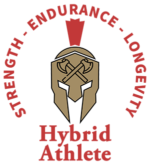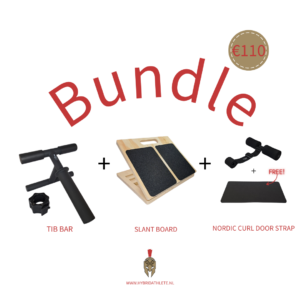
We’ve talked about the benefits of barefoot shoes and how to test whether you’re ready for the switch. Now it’s time we talked about the exercises that help you get there, specifically short foot exercises.
As you probably know, going barefoot isn’t an easy task, and our bodies need preparation and an adaptation period.
But the benefits of reclaiming your foot, and by extension body stability, outweigh the slight discomfort of the transition by a landslide.
So, let’s dig into barefoot balance exercises that will smooth things over efficiently.
Table of Contents
Foot Strength and Balance – Warm-Up
You’d be surprised by how many people, even some top-level athletes, miss out on developing their feet in some way.
The foot is an incredibly complex biomechanical structure that has the ability to move in virtually all directions. And, since cushioned footwear degraded that foot mobility, we need to start from the bottom. Here’s how to execute a proper warmup for foot strength and balance:
Towel grabs (aka toe curls)
Place a towel on the floor and put your whole foot on one end. Using only your toes pull the towel in a crumpling motion toward your foot. To progress, put some weight on the far end of the towel, or if you’re feeling wild, drench the towel with water.

Short foot single leg stance (with variations)
Standing on one leg, with your toes relaxed, pull the ball of your foot underneath the big toe towards your heel. This will activate the medial longitudinal arch. The MLA plays a big role in foot stability and is crucial when it comes to overall balance. We call this the activation of the short foot.
Here’s a simple short foot single stance progression:
- Regular stance – if you can hold for 10 seconds with no disbalances, you can proceed to the next variation
- Short foot single leg stance with head-turning – while you balance on an MLA-activated foot, rotate between looking up, down, left, and right. This will put you off balance, but keep at it. Once you master it (by holding solid 10 seconds on each leg)…
- Short foot single leg stance with your eyes closed – this is where the real challenge lies. Just be careful not to fall over something and hurt yourself.
Static Stabilization (using the Short Foot)
Adapting to barefoot shoes requires a lot of single-leg work. When it comes to static stabilization, you can expect some discomfort at first. Cushioned footwear doesn’t allow a significant number of stabilizer muscles to do their job. And the short-foot method is here to help you out. Here are four static stabilization exercises to help you get into barefoot shoes:
1. Single Leg Stance – Leg Abduction

It’s as simple as it sounds, but not as easy for beginners. This exercise targets the gluteus medius, but it works on the deep tissues of the foot due to stabilization. Here’s how to do it:
- Begin from a single-leg stance
- Push your non-working leg out to the side (abduct) in a controlled fashion
- Hold for a moment and bring the leg back (without putting it down on the floor)
Foot cue: while you’re bringing your leg back to the starting position, shorten the foot and aim to activate your arches. This will help you reach the deep tissues of the foot and develop them efficiently.
2. Single Leg Stance – Single leg deadlift

Now let’s change the motion direction a bit and widen the range. The single-leg deadlift targets the gluteus (medius and maximus), yes, but if we shorten the foot while doing it, we get foot stability as a result. Here’s how to practice barefoot balance with single-leg deadlifts:
- Start with a single-leg stance position, with your working foot firmly on the ground
- Push the opposite leg backward, activating your glutes
- Leading with your chest, go back to starting position
Foot cue: while going back to the starting position with your chest up, engage your shortened foot. This will make the movement more challenging for your feet, which is the goal we’re aiming at.
3. Single Leg Stance – Single leg squat

This is a more quad-dominant exercise that will help you develop better squatting biomechanics:
- Start from a single-leg stance with a strong foot
- Lead with the opposite leg and descend into a squat
- Return to your starting position by pushing with your quads
Foot cue: again, on the way back, engage your short foot and try your best to keep the balance.
4. Plie Squat – Sumo to Single leg squat

Here we have a real static stabilization challenge (if you mastered the previous exercises that is). The challenge of this short-foot exercise comes from moving in multiple planes, which directly translates to more foot activation. Here’s how:
- Start from a Plie squat position
- Shif the weight to your right leg and keep the right knee bent
- Go into a single-leg squat or single-leg stance
Foot cue: shorten your right foot while going back to the starting Plie position. If this is challenging for you, go back to single-leg squats or deadlifts. Remember, your short foot should be active on the way back to the starting position.
Dynamic Stabilization (using the Short Foot)
Developing your feet also requires a more dynamic regimen that goes hand-in-hand with static stabilization. And it complements the KOT (knees over toes) style of bulletproof training as well.
Again, you should be utilizing the strong-to-short-foot transition while returning to your starting stance. However, expect a bit more instability in the beginning – dynamic stabilization targets more stabilizing muscles along your joints.
1. Side Lunge to Single Leg Stance

Let’s begin with the easiest short foot dynamic stabilization exercise – the side lunge:
- Start in a single-leg stance
- Lunge to the side, shifting weight to your working leg
- Return to the starting position, while engaging your short foot
This will engage your core, quads, gluteus medius, and maximus, yes, but the focus should be on your foot. Do your best to not let your ankles collapse to the side.
Side Lunge to Leg Abduction
Now add an extra step:
- Start from the single-leg stance
- Lunge to the side by shifting your weight
- Go back to the starting position
- As soon as you reset, push your opposite leg into abduction
The key is to keep your short foot active in the last part of the movement. Stay strong and focus on your foot to combat the momentum.
2. Bowler’s Squat to Single Leg Stance

Let’s add another plane into the movement:
- Start with a single-leg stance
- Push your other leg back and behind, while keeping your chest up
- Return to single-leg stance, with a slightly bent knee
The short foot + bent knee combination will help you target your hip and knee stabilizers more efficiently.
3. Reverse Lunge to Single Leg Stance

Reverse lunge to SLS is another great way to activate your hips and knees (in addition short foot engagement):
- Stand in a single-leg stance with your working foot firmly on the ground
- Descend into a reverse lunge by pushing your other leg backward
- Return to the starting position
You can expect both quad and posterior chain activation, with an emphasis on hip flexors. Just remember to activate your short foot on the way back.
4. Reverse Lunge into Floor Tap
Lastly, we are going to add another movement, similar to the side lunge to leg abduction exercise above:
- Start with a single-leg stance
- Descend into a reverse lunge
- Go back to SLS while activating your short foot
- As soon as you get back, hinge at the hips and proceed into a floor tap
If you find this difficult, experiment with floor taps to get used to the movement. Remember, your short foot needs to be active during both parts of the movement (lunge and floor tap).
Reclaim Your Barefoot Strength with Short Foot Activation
Learning how to activate and develop the short foot mechanics may feel a bit awkward at first. But, if you want to be able to run far and lift heavy in your barefoot shoes, it’s absolutely worth the time and the hassle. And the best thing is – you can do all of these right now, wherever you are.
Modern-day footwear made us sacrifice body dynamics for comfort. Luckily, we have barefoot shoes now that can help you reclaim and rebuild the way you walk, stand, sit, run, and lift.
Give it a go – you’ll be surprised by how quickly your body remembers how to move naturally.
Get The Best Injury-prevention Training Equipment At Our Shop:
GET THE BEST INJURY-PREVENTION TRAINING EQUIPMENT:
Above all, a storyteller. Then comes marketing, branding, writing music, powerlifting, and woodworking.







